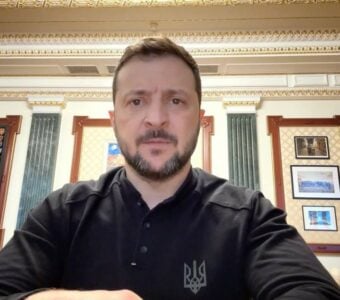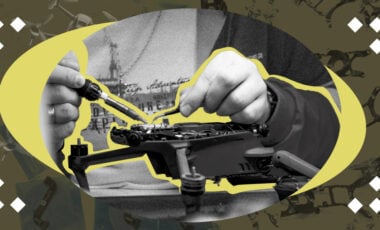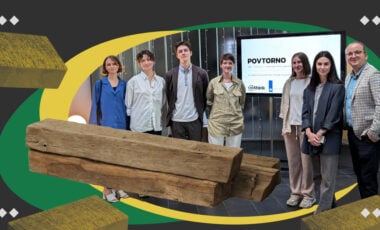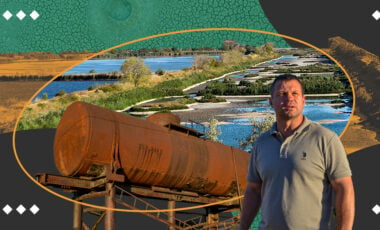Ukrainian engineer leads Mars Desert Research Station in USA
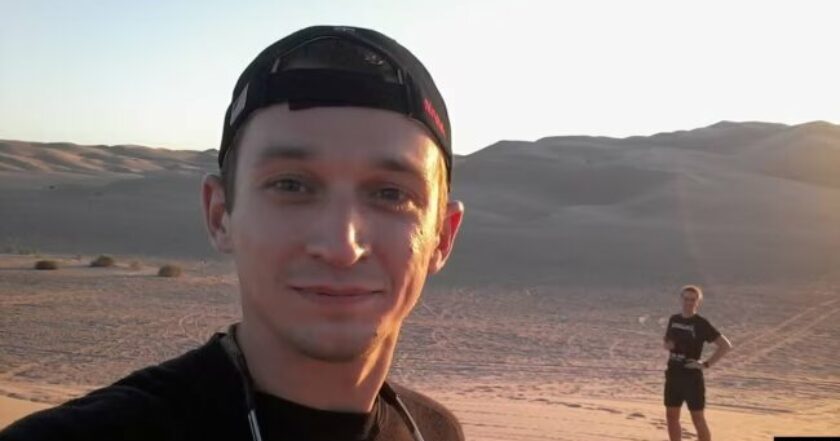
Photo: Facebook/ Serhii Yakymov
Ukrainian Serhii Yakymov headed the Martian Research Station in the San Rafael desert in the US state of Utah.
The Voice of America reported this.
As noted, the station conducts geological and social research, simulating the possible life of astronauts on the surface of Mars.

Photo: from the archive of Serhii Yakymov
"We host various groups from all over the world who conduct experiments or test equipment. And this Martian station is classified as a geological analog because the geology of the surrounding desert is as close to the geology of Mars as possible," Yakymov said.
The rotation of the research groups lasts for two weeks, during which the participants live in special modules, eat vegetables and fruits from the "Martian" greenhouse, and go outside only in spacesuits.

Crew members at a research station in Utah travel by ATV. Photo by AP/Rick Bowmer
According to Yakymov, who participated in several such expeditions, coping with boredom in isolation is most challenging. Over the past 20 years, many studies have been conducted on human interaction in such conditions.
"The latest research results, which a group from Europe conducted, established that the best crew that will fly to Mars should consist entirely of women," the Ukrainian said.
According to research conducted since the middle of the last century, compared to men, women consume fewer resources – air, water, and food, which are in short supply in space.
Yakymov, who graduated from the Kyiv Polytechnic Institute with a specialty in aircraft control systems, dreams of becoming an astronaut and going to Mars.

Martian Desert Research Station in Hanksville, Utah. Photo by AP/Rick Bowmer
Eight years ago, he was chosen from a pool of one hundred applicants for a future flight to the Red Planet. However, the Dutch company Mars One, responsible for organizing the mission, went bankrupt. Despite this setback, the Ukrainian did not give up on his dream.
The Martian desert research station was created by the public organization "The Martian Society" and funded by various donors, including billionaire Jeff Bezos and Elon Musk.
According to Yakymov, the flight of humans to Mars is a distant prospect, but research at the Martian station can also be useful on Earth. In particular, plant-growing research on the station will help make food more accessible to many resource-scarce regions of the world.
Yakymov explains that the possibility of humans traveling to Mars is still far off. Still, the research conducted at the Martian station can also have practical benefits for our planet. The study of plant growth is critical, which can improve access to food in areas with limited resources.
"For example, research on growing food and some plants can be done efficiently and cheaply. Food can become more accessible to many regions on Earth currently suffering from a lack of resources," says Yakymov.
As the next stage in his career, Serhiy sees work at NASA at the Space Center in Houston (Texas), which, in particular, is engaged in training astronauts, but for this, he must first obtain US citizenship.
"Working in the aerospace field without citizenship is very difficult because many, even private companies, work for many government orders or orders from other states, and they all fall under secrecy," explains Serhii Yakymov.
For reference:
On June 26, four NASA astronauts left for a year on the "Mars base" on Earth.
Kelly Heston, Ross Brockwell, Nathan Jones, and Anka Selariu, all astronauts, arrived in a replica of the Mars Dune Alpha base at NASA's Johnson Space Center in Houston, Texas, at 02:30 Kyiv time.
The residence covers 158 square meters.
Astronauts will not leave the 3D-printed structure until July 7, 2024, except for the occasional Martian walk within the confines of an adjacent 111-square-meter enclosed "Mars sandbox," it read.
"This is a fascinating development for me because one of the things that is different from some of our previous counterparts at NASA is that people will be isolated as a crew for 378 days," said Suzanne Bell, director of the Behavioral Health Laboratory. and productivity at NASA's Johnson Space Center.
As reported, in September of this year, the OSIRIS-REx probe of the American space agency NASA with a sample of the Bennu asteroid landed at the military test and training range in Utah. This is the first time the United States of America has delivered rocks and dust from an asteroid to Earth.
It should be noted that after Russia's attempt to land its Luna-25 shuttle near the south pole of the Moon failed due to an engine malfunction, India became the first country to land a spacecraft in the same area.
On September 2, India launched its own solar observation mission for the first time after the successful landing of a spacecraft on the moon.




